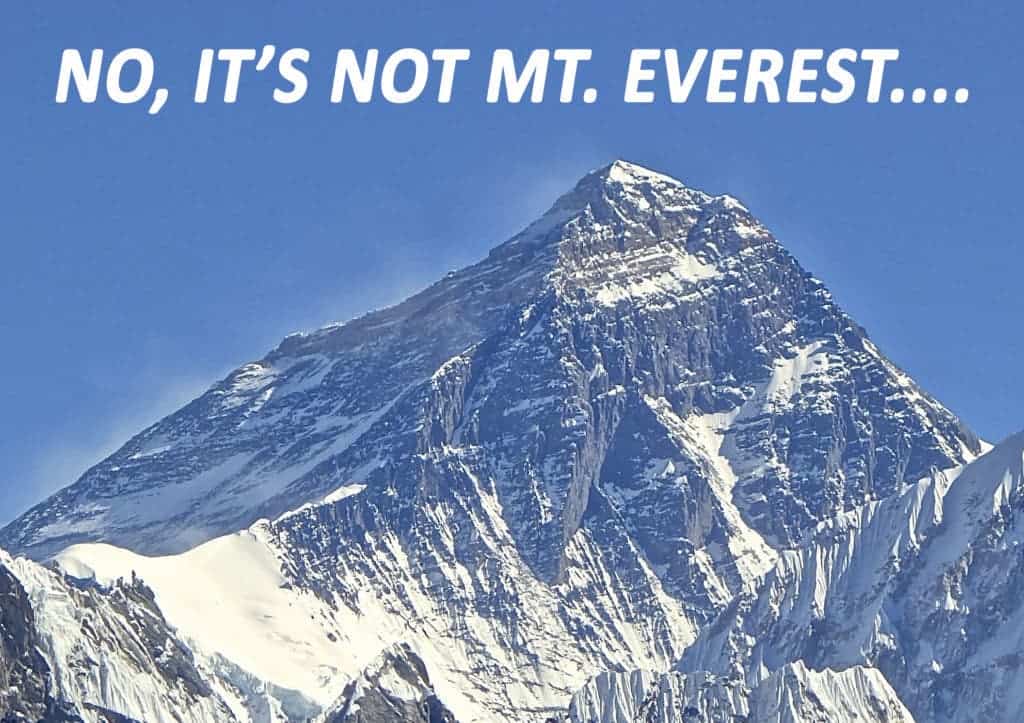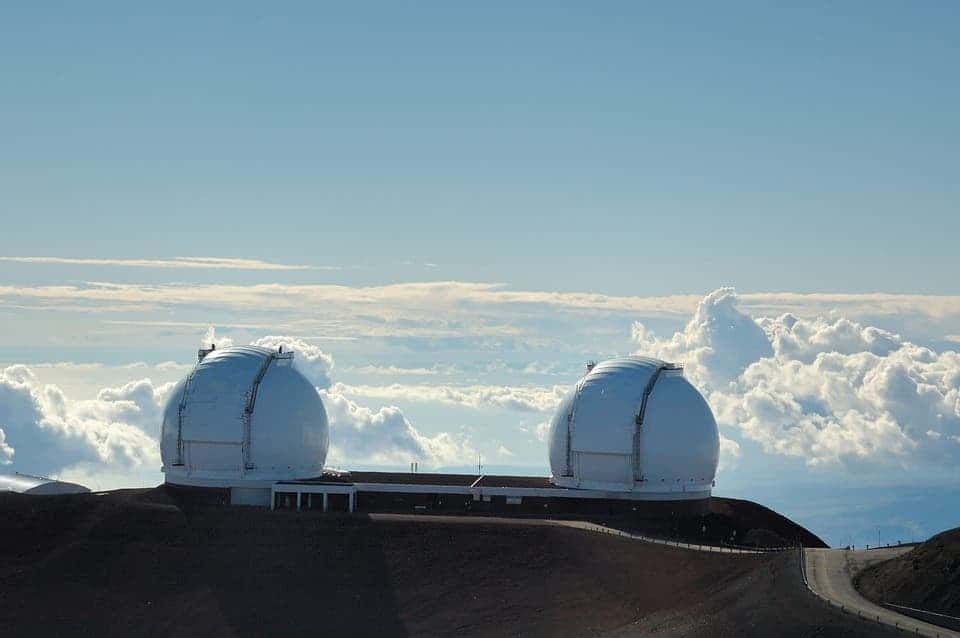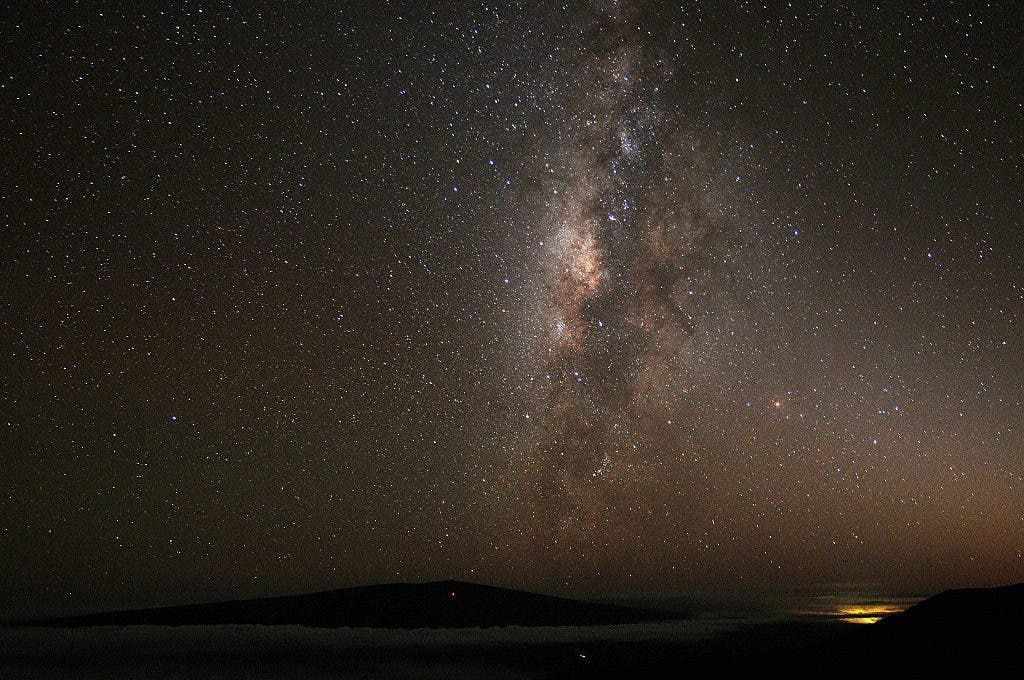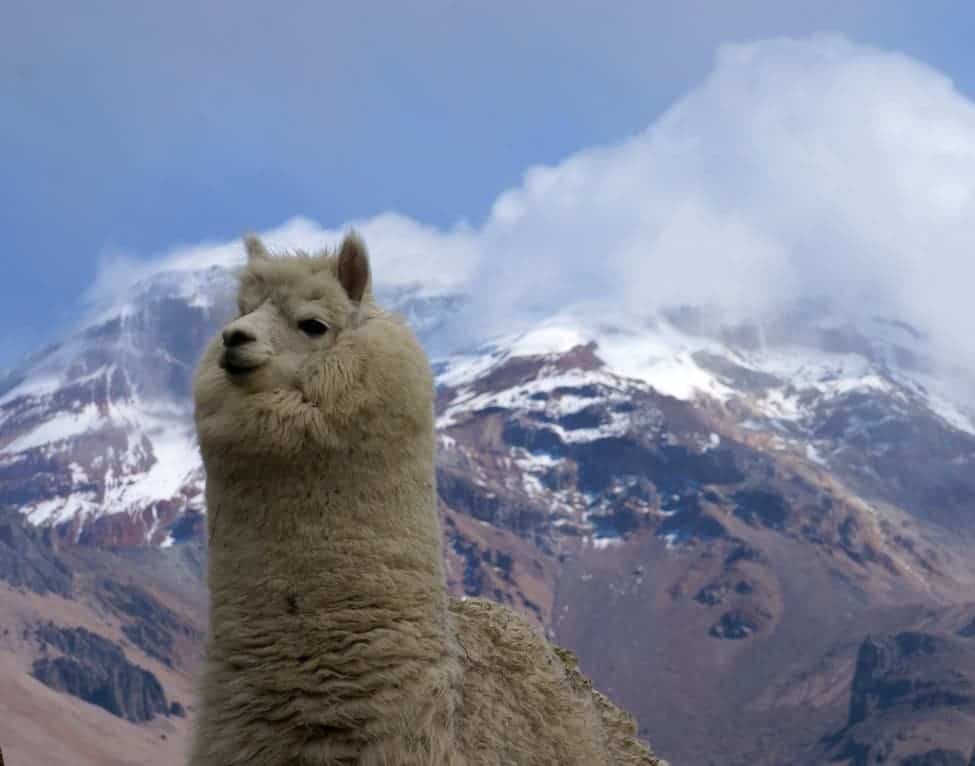What’s the tallest mountain in the world? Hint: it’s not Mt. Everest
It can take weeks of hard work to climb the dangerous summit of Mt. Everest, but at least you can feel like royalty knowing you were among the few to ever reach the highest peak on Earth. Good on you if you managed this achievement, but the rest of this article might burst your bubble.
Not trying to nitpick, but the summit of Mt. Everest is the highest point above sea level; it’s not, however, the tallest mountain on the planet.
 Credit: Wikimedia Commons.
Credit: Wikimedia Commons.
World’s tallest mountain
Mt. Everest, at 8,850 meters (29,035 feet) above sea level, undeniably claims the crown as the place with the highest altitude in the world. The title of “tallest mountain in the word”, however, as measured from the base to its peak, belongs to Mauna Kea which has an altitude of only 4,205 meters (13,796 feet) above sea level.
The catch: it’s a dormant shield volcano on the island of Hawaii with its base about 6,000 meters (19,700 feet) below the surface of the Pacific Ocean. In other words, more than half of it is submerged. When you add everything up, Mauna Kea is over 10,000 meters tall, way taller than the 8,850 meters of Mount Everest — making it the world’s tallest mountain. It’s also the tallest volcano on Earth.
 Observatory on Mauna Kea. Credit: Pixabay.
Observatory on Mauna Kea. Credit: Pixabay.
Mauna Kea is thought to have formed over a hot spot in the Earth’s crust, which is a region where magma from the mantle rises up through the crust and erupts onto the surface. The hot spot is thought to have been stationary while the Pacific Plate, on which Mauna Kea sits, has moved over it. As the plate moved northwestward over the hot spot, a series of volcanoes formed, with each successive volcano becoming older and more eroded as the plate moved farther away from the hot spot. Mauna Kea is the youngest of these volcanoes, having formed only one million years ago, and it is still an active volcano, although it has not erupted in many centuries. Scientists believe that the last time Mauna Kea erupted was more than 45,000 years ago.
 The skyline view during the night from Mauna Kea. No wonder there’s a huge astronomical observatory here. Credit: Wikimedia Commons.
The skyline view during the night from Mauna Kea. No wonder there’s a huge astronomical observatory here. Credit: Wikimedia Commons.
Mauna Kea is famous for another distinction, as well: it is home to the world’s largest astronomical observatory, the $1.4 billion Thirty Meter Telescope. At this elevation, the summit is above 40% of Earth’s atmosphere, which helps improve its view of distant cosmic objects. The extremely dry and almost cloud-free conditions also help, making it an ideal spot from which to make astronomical observations.
Mauna Loa is also a stratovolcano and is the largest volcano on the planet in terms of volume and area covered. It rises to an elevation of 13,679 feet (4,169 meters) above sea level, making it the second-highest mountain in Hawaii, but also the second-highest mountain on Earth as measured from base to peak.
MountainHeight (feet)Height (meters)Mauna Kea33,10010,100Mauna Loa30,0809,170Denali20,3106,190Chimborazo20,5656,268Aconcagua22,8316,959K228,2518,611Mount Everest29,0298,848Mont Blanc de Courmayeur15,7774,807Mont Blanc du Tacul15,1514,621Pico de Orizaba18,4915,636World’s tallest mountains, as measured from base to peak. The base of a mountain can be difficult to define, as it can be below sea level, underground, or underwater. For example, Mauna Kea’s base is located on the floor of the Pacific Ocean, while the base of Mount Everest is located on the Tibetan Plateau.
World’s highest point
 Earth is not a perfect sphere. Credit: Giphy.
Earth is not a perfect sphere. Credit: Giphy.
Our planet is not a perfect sphere. It is an oblate spheroid — it looks kind of like a beach ball that someone sat on. The Earth bulges outward at the equator and flattens near the poles, so people in countries like Ecuador, Kenya, Tanzania, and Indonesia can be up to 13 miles closer to the moon than people living on the North or South poles.
 An alpaca with Chimborazo in the background. Even though the mountain is very close to the equator, it is high enough to support a year-round snow cap. Credit: International Alpine Guides.
An alpaca with Chimborazo in the background. Even though the mountain is very close to the equator, it is high enough to support a year-round snow cap. Credit: International Alpine Guides.
Mount Chimborazo in Ecuador — an inactive volcano in the Andes — has an altitude of only 6,310 meters (20,703 feet), which is way less than Mt. Everest. It’s not even the highest peak above sea level in the Andes mountain range.
But because Chimborazo sits just one degree south of the equator, its apex is the “world’s highest point from the center of the Earth” at about 21 million feet (3,967 miles) away from the core. It is the closest point to the Sun on Earth. Everest on the other hand, located at a latitude of 28 degrees north (nearly one-third of the way to the pole) doesn’t even make it in the top 20 highest points as measured from the center of the planet.
MountainHeight (feet)Height (meters)Distance from Earth’s Center (miles)Chimborazo20,5656,2683,967Aconcagua22,8316,9593,959Mount Kosciuszko7,3102,2283,986Kilimanjaro19,3415,8953,972Elbrus18,5105,6423,976Vinson Massif16,0504,8923,986Pico de Orizaba18,4915,6363,976Puncak Jaya16,0244,8843,986Mount Wilhelm14,7934,5093,986Denali20,3106,1903,967The highest points on Earth as measured from the center of the Earth. The Earth is not a perfect sphere, so its radius is not the same everywhere. The distance from the center of the Earth to the surface is greatest at the equator and shortest at the poles. The highest points on this list are all located near the equator, which is why their distances from the center of the Earth are similar.
It’s not clear how Chimborazo got its name, but according to some accounts, it could come from a combination of the words schingbu, which means “women” in the Cayapa language, and razo, which is Quichua for “snow”. Essentially, that would translate as “Women of Snow”, but natives know the mountain as Urcorazo or “Mountain of Ice,” so those accounts might not be very reliable.
Still, what we do know for sure, according to local anthropologists, is that Chimborazo “has been venerated since pre-Columbian times” and is “still a sacred mountain thought to be close to God.”
Despite not being as difficult to climb as Mt. Everest, it has its challenges. Climbing Mt. Chimborazo takes about two weeks after getting acclimatized. You should be aware that Chimborazo is heavily glaciated and subject to severe weather and avalanches, so be very careful if you want to climb to the highest spot on this planet.
So where does all of this leave us? Does this mean you’ve been lied to by geography textbooks all of this time? Well, if you say that Mr. Everest is the tallest mountain in the world, you’re not wrong because intent also matters. When people pose this question, at least 9 times out of 10 they are referring to the tallest mountain as measured from sea level. But now that you know you can get totally different places when you change the framing of the question, which can be quite the icebreaker in any conversation.















![Toni Kroos là ai? [ sự thật về tiểu sử đầy đủ Toni Kroos ]](https://evbn.org/wp-content/uploads/New-Project-6635-1671934592.jpg)


